One of the biggest ancient cities of the Mediterranean Ephesus, is now undergoing important restoration. The marble hall of the palace-like house in which the city’s Roman consul lived in A.D. 275 has begun to be restored, putting back together 350-square-meter walls that are now broken into 120,000 pieces.
The deputy supervisor of the ongoing excavations in Ephesus, Sabine Ladstatter, said this method was used in Italy once before, but with such a large-scale assembly will be the first in history. Excavations have been ongoing in this city for 138 years. Terrace Houses where the richest people lived are seen as the most exciting sites for excavation and restoration.
Considered to be the most important of the Terrace houses, the palatial house of Gaius Flavius Furius Aptus, the city consul, is drawing attention as a focus of excavation and restoration projects. Its magnificent 178-square-meter salon, whose walls were clothed with marble, is witnessing a major restoration. The plan is to begin with the restoration of the salon’s walls.
The walls had sunk deep into the soil over time due to numerous earthquakes. The pieces of the walls have been found through the extensive excavations, which have been going on for years. Presently the there are about 120,000 pieces that are going to be used for the restoration.
Ladstatter said they believe those pieces constitute 90 percent of the walls. She added that they are going to use laser screening to find the proper piece to put into the proper place in the wall. “What we are going to do here now is an effort to complete a puzzle composed of 120,000 pieces,” Ladstatter summarized. The restoration is expected to cost $300,000.
World’s biggest puzzle made in Terrace Houses at Ephesus,
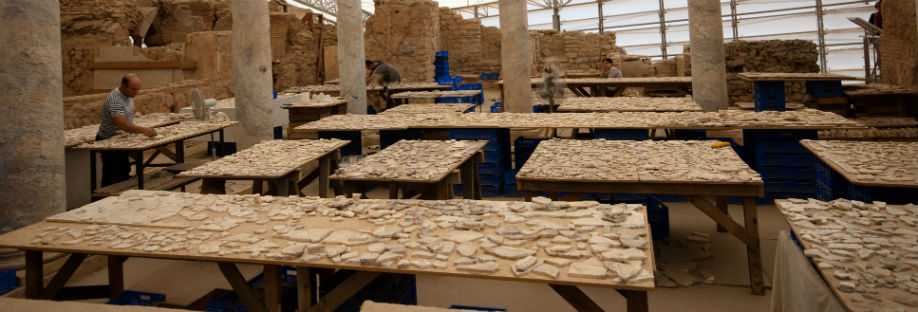
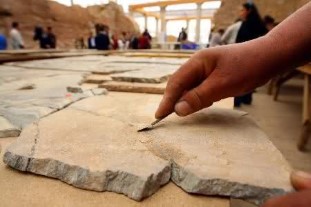
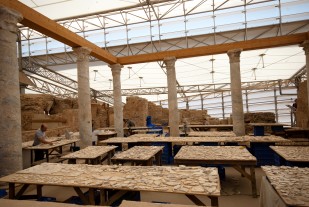
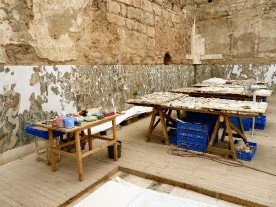
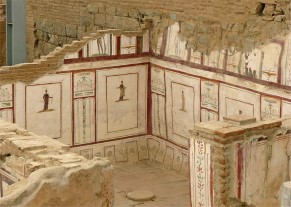
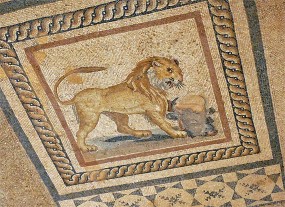
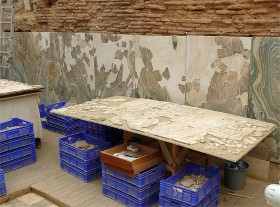
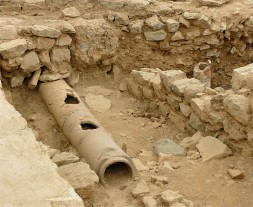
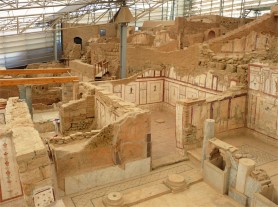
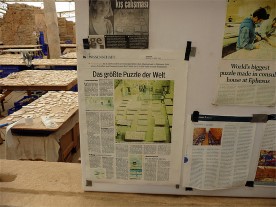
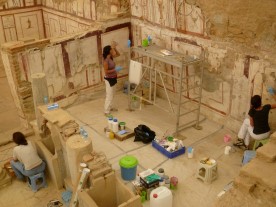
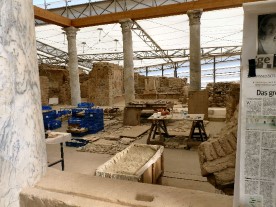


The terrace houses, currently in the process of being excavated, are covered by a structure that is out of place within the Ephesus archeological site. Excavation has been going on for at least 30 years, and it is fascinating to see pictures of what the site looked like in 1967.
They have made it easy to tour this site with good steps and plateforms throughout. Extra cost from entrance fee but would be a shame to come this far and not see. Our guide was good at timing our tour so we had no long lines and could enjoy seeing all details that are being uncovered.
so ancient yet so modern. the romans were indeed master builders felt we just didint have enough time.
The best part of Ephesus and not to be missed.
Restored by the Austrian and Turkish governments, these homes were for the top tier wealthy individuals that lived in Ephesus. They had running water, and sewer systems, very advanced for that era.
Amazed at all the modern conveniences they had; running water, sewer system, heating, air conditioning.
Absolutely amazing! It costs more to go here but it is well worth it. This is where archaeology and a commendable museum experience combine to give an insight into the lives and culture of a lost civilisation.
If you want to learn how the middle-class families of Ephesus lived, you should tour the terrace houses. You actually climb stairs and stand on clear, plexiglass landings so that you can look down on the lovely mosaics and paintings. It is difficult to imagine that these people had running water and heat in their houses until you actually see…
We enjoyed all parts of Ephesus. We had an excellent guide who made it even more interesting. We loved our visit to the Terrace houses because it is so rare to find domestic architecture that is 2,000 years old…usually one finds the stone monumental structures (the privy?) temple, library, theater, etc., but not often anything domestic. The hot and cold…
Make sure you afford yourself enough time and buy the ticket to the Terrace Houses. Covered beneath a modern structure, the terrace house excavations afford you a chance to see how the wealthy lived nearly 3000 years ago. Central heating, views and spectacular mosaics sure set them apart from the other residents.